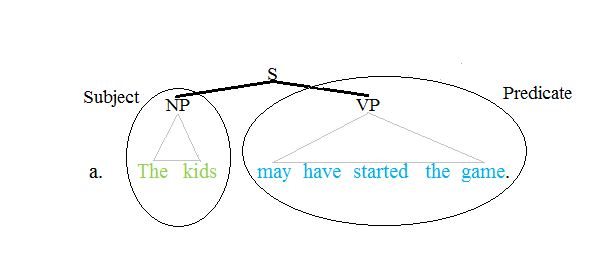|
Vyapti
Vyapti, a Sanskrit expression, in Hindu philosophy refers to the state of pervasion. It is considered as the logical ground of inference which is one of the means to knowledge. No conclusion can be inferred without the knowledge of vyapti. Vyapti guarantees the truth of conclusion. It signifies the relation of invariable concomitance between "''hetu''" and "''sadhya''" and is of two kinds. Vyapti between terms of unequal extension is called "''asamavyavyapti''" or "''visamavyapti''", and vyapti between equal extensions is called "''samavyapti''". Vyapti is a universal statement that expresses the "''niyata sahacharya''" or relation of constant concomitance between ''hetu'' or the middle term and ''sadhya'' or the major term and implies the "''sahacara''" i.e. the knowledge of invariable relation of causality or co-existence between ''sadhya'' and ''hetu'' in all the three instances of time, which is possible when the "''anupadhik sambandha''" i.e. relation of unconditionality betw ... [...More Info...] [...Related Items...] OR: [Wikipedia] [Google] [Baidu] |
Nyaya
Nyāya (Sanskrit: न्यायः, IAST: nyāyaḥ), literally meaning "justice", "rules", "method" or "judgment", is one of the six orthodox (Āstika) schools of Hindu philosophy. Nyāya's most significant contributions to Indian philosophy were the systematic development of the theory of logic, methodology, and its treatises on epistemology. Nyāya epistemology accepts four out of six ''pramanas'' as reliable means of gaining knowledge – ''pratyakṣa'' (perception), ''anumāṇa'' (inference), ''upamāna'' (comparison and analogy) and ''śabda'' (word, testimony of past or present reliable experts).John A. Grimes, A Concise Dictionary of Indian Philosophy: Sanskrit Terms Defined in English, State University of New York Press, , page 238DPS Bhawuk (2011), Spirituality and Indian Psychology (Editor: Anthony Marsella), Springer, , page 172Gavin Flood, An Introduction to Hinduism, Cambridge University Press, , page 225 In its metaphysics, Nyāya school is closer to the Vaish ... [...More Info...] [...Related Items...] OR: [Wikipedia] [Google] [Baidu] |
Sanskrit
Sanskrit (; stem form ; nominal singular , ,) is a classical language belonging to the Indo-Aryan languages, Indo-Aryan branch of the Indo-European languages. It arose in northwest South Asia after its predecessor languages had Trans-cultural diffusion, diffused there from the northwest in the late Bronze Age#South Asia, Bronze Age. Sanskrit is the sacred language of Hinduism, the language of classical Hindu philosophy, and of historical texts of Buddhism and Jainism. It was a lingua franca, link language in ancient and medieval South Asia, and upon transmission of Hindu and Buddhist culture to Southeast Asia, East Asia and Central Asia in the early medieval era, it became a language of religion and high culture, and of the political elites in some of these regions. As a result, Sanskrit had a lasting effect on the languages of South Asia, Southeast Asia and East Asia, especially in their formal and learned vocabularies. Sanskrit generally connotes several Indo-Aryan languages# ... [...More Info...] [...Related Items...] OR: [Wikipedia] [Google] [Baidu] |
Jain Philosophy
Jain philosophy or Jaina philosophy refers to the Ancient India, ancient Indian Indian philosophy, philosophical system of the Jainism, Jain religion. It comprises all the Philosophy, philosophical investigations and systems of inquiry that developed among the Jain schools and branches, early branches of Jainism in ancient India possibly developed by followers of Parswanath()and later following the ''Parinirvana, parinirvāṇa'' of Mahavira, Mahāvīra (). One of the main features of Jain philosophy is its Mind–body dualism, dualistic metaphysics, which holds that there are two distinct categories of existence: the Jīva (Jainism), living, conscious, or sentient beings (''jīva'') and the non-living or Matter, material entities (''ajīva''). Jain literature, Jain texts discuss numerous philosophical topics such as cosmology, epistemology, ethics, metaphysics, ontology, the philosophy of time, and soteriology. Jain thought is primarily concerned with understanding the nature o ... [...More Info...] [...Related Items...] OR: [Wikipedia] [Google] [Baidu] |
Aurobindo
Sri Aurobindo (born Aurobindo Ghose; 15 August 1872 – 5 December 1950) was an Indian yogi, maharishi, and Indian nationalist. He also edited the newspaper ''Bande Mataram''. Aurobindo studied for the Indian Civil Service at King's College, in Cambridge, England. After returning to India, he took up various civil service works under the Maharaja of the princely state of Baroda. He became increasingly involved in nationalist politics in the Indian National Congress and the nascent revolutionary movement in Bengal with the Anushilan Samiti. He was arrested in the aftermath of a number of bombings linked to his organization in a public trial where he faced charges of treason for Alipore Conspiracy and then released, after which he moved to Pondicherry and developed a spiritual practice he called Integral Yoga. He wrote ''The Life Divine'', which deals with the philosophical aspect of Integral Yoga and ''Synthesis of Yoga'', which deals with the principles and methods ... [...More Info...] [...Related Items...] OR: [Wikipedia] [Google] [Baidu] |
Upadhi
Upādhi ( ) is a term in Hindu philosophy meaning "imposition" or "limitation". In Hindu logic, an upādhi is the condition which accompanies the major term and must be supplied to limit the too general middle term. For instance, "the mountain has smoke because it has fire" rests on the false premise that all fire is accompanied by smoke. To restrict the too general middle term here, 'damp fuel' should be added as the condition of smoky fire. It can also be viewed as a disguise or vehicle for true reality, both defining something and limiting it. For example, the body of a man or animal is the upādhi of its true self. Another example is that the true self, Brahman (Sanskrit: ब्रह्म ) is hidden in a living being, jiva (Sanskrit: जीव ) by the upādhi of the mind, Antahkarana (Sanskrit: अंतःकरण ) and the creator God, ''Īshvara (Sanskrit: ईश्वर )'' by the upādhi of Māyā (Sanskrit: माया ) an appearance which is not what it see ... [...More Info...] [...Related Items...] OR: [Wikipedia] [Google] [Baidu] |
Buddhists
Buddhism, also known as Buddhadharma and Dharmavinaya, is an Indian religion and philosophical tradition based on teachings attributed to the Buddha, a wandering teacher who lived in the 6th or 5th century BCE. It is the world's fourth-largest religion, with about 500 million followers, known as Buddhists, who comprise four percent of the global population. It arose in the eastern Gangetic plain as a movement in the 5th century BCE, and gradually spread throughout much of Asia. Buddhism has subsequently played a major role in Asian culture and spirituality, eventually spreading to the West in the 20th century. According to tradition, the Buddha instructed his followers in a path of development which leads to awakening and full liberation from '' dukkha'' (). He regarded this path as a Middle Way between extremes such as asceticism or sensual indulgence. Teaching that ''dukkha'' arises alongside attachment or clinging, the Buddha advised meditation practices and ... [...More Info...] [...Related Items...] OR: [Wikipedia] [Google] [Baidu] |
Inductive Reasoning
Inductive reasoning refers to a variety of method of reasoning, methods of reasoning in which the conclusion of an argument is supported not with deductive certainty, but with some degree of probability. Unlike Deductive reasoning, ''deductive'' reasoning (such as mathematical induction), where the conclusion is ''certain'', given the premises are correct, inductive reasoning produces conclusions that are at best ''probable'', given the evidence provided. Types The types of inductive reasoning include generalization, prediction, statistical syllogism, argument from analogy, and causal inference. There are also differences in how their results are regarded. Inductive generalization A generalization (more accurately, an ''inductive generalization'') proceeds from premises about a Sample (statistics), sample to a conclusion about the statistical population, population. The observation obtained from this sample is projected onto the broader population. : The proportion Q of the ... [...More Info...] [...Related Items...] OR: [Wikipedia] [Google] [Baidu] |
Predicate (grammar)
The term predicate is used in two ways in linguistics and its subfields. The first defines a predicate as everything in a standard declarative sentence except the subject (grammar), subject, and the other defines it as only the main content verb or associated predicative expression of a clause. Thus, by the first definition, the predicate of the sentence ''Frank likes cake'' is ''likes cake'', while by the second definition, it is only the content verb ''likes'', and ''Frank'' and ''cake'' are the argument (linguistics), arguments of this predicate. The conflict between these two definitions can lead to confusion. Syntax Traditional grammar The notion of a predicate in traditional grammar traces back to Aristotelian logic. A predicate is seen as a property that a subject has or is characterized by. A predicate is therefore an expression that can be ''true of'' something. Thus, the expression "is moving" is true of anything that is moving. This classical understanding of pred ... [...More Info...] [...Related Items...] OR: [Wikipedia] [Google] [Baidu] |
Hindu Philosophy
Hindu philosophy or Vedic philosophy is the set of philosophical systems that developed in tandem with the first Hinduism, Hindu religious traditions during the Iron Age in India, iron and Classical India, classical ages of India. In Indian philosophy, of which Hindu philosophy is a prominent subset, the word used for philosophy is ''Darshana'' (Sanskrit: दर्शन; meaning: "viewpoint or perspective"), from the Sanskrit root 'दृश' () meaning 'to see, to experience'. The schools of thought or ''Darshanas'' within Hindu philosophy largely equate to the six ancient orthodox schools: the ''Āstika and nāstika, āstika'' (Sanskrit: आस्तिक) schools, defined by their acceptance of the Vedas, the oldest collection of Sanskrit literature, Sanskrit texts, as an authoritative source of knowledge. Of these six, Samkhya (सांख्य) is the earliest school of Dualism (Indian philosophy), dualism; Yoga (philosophy), Yoga (योग) combines the metaphysics ... [...More Info...] [...Related Items...] OR: [Wikipedia] [Google] [Baidu] |
Reason
Reason is the capacity of consciously applying logic by drawing valid conclusions from new or existing information, with the aim of seeking the truth. It is associated with such characteristically human activities as philosophy, religion, science, language, mathematics, and art, and is normally considered to be a distinguishing ability possessed by humans. Reason is sometimes referred to as rationality. Reasoning involves using more-or-less rational processes of thinking and cognition to extrapolate from one's existing knowledge to generate new knowledge, and involves the use of one's intellect. The field of studies the ways in which humans can use formal reasoning to produce logically valid arguments and true conclusions. Reasoning may be subdivided into forms of logical reasoning, such as deductive reasoning, inductive reasoning, and abductive reasoning. Aristotle drew a distinction between logical discursive reasoning (reason proper), and intuitive reasoning, in whi ... [...More Info...] [...Related Items...] OR: [Wikipedia] [Google] [Baidu] |





